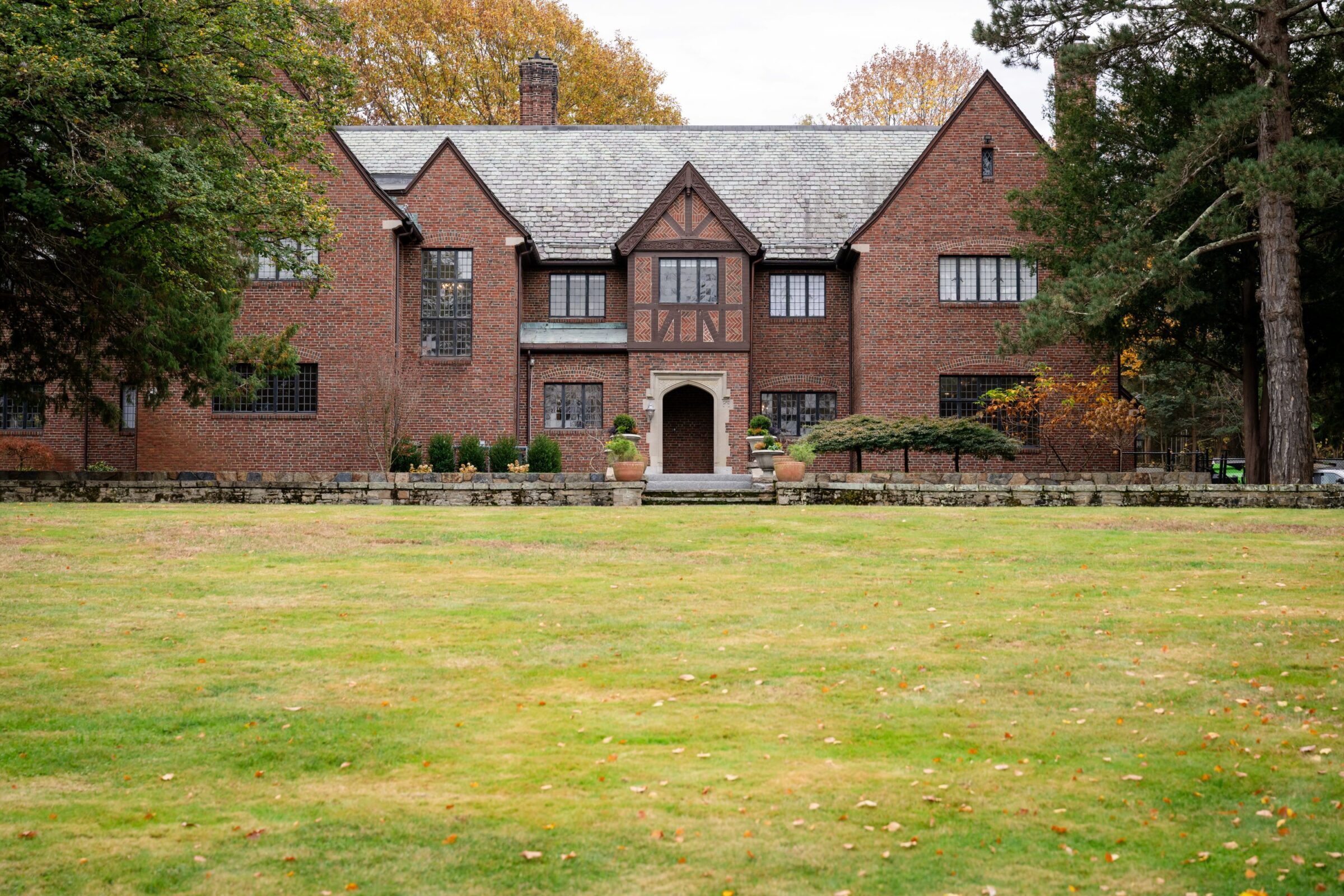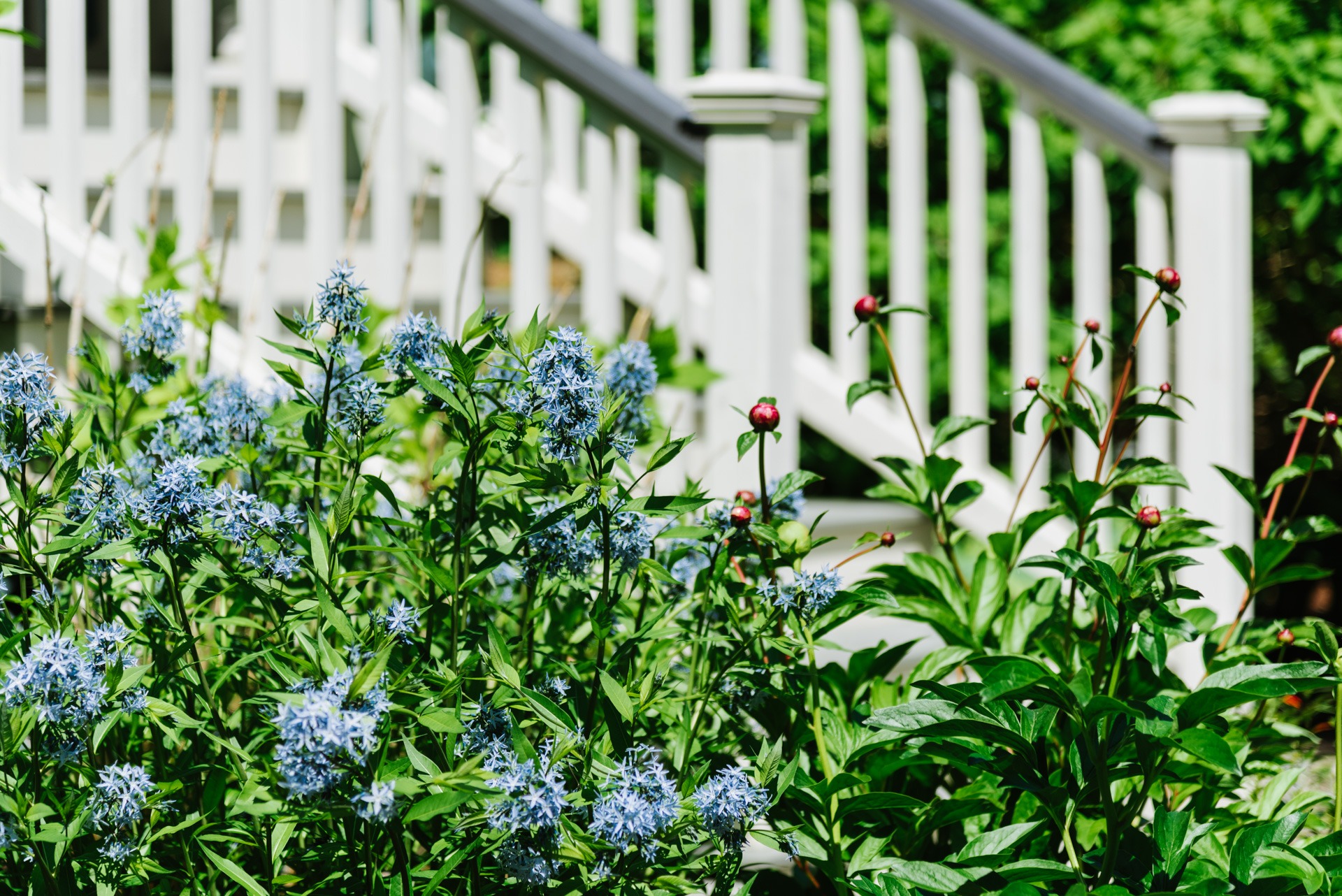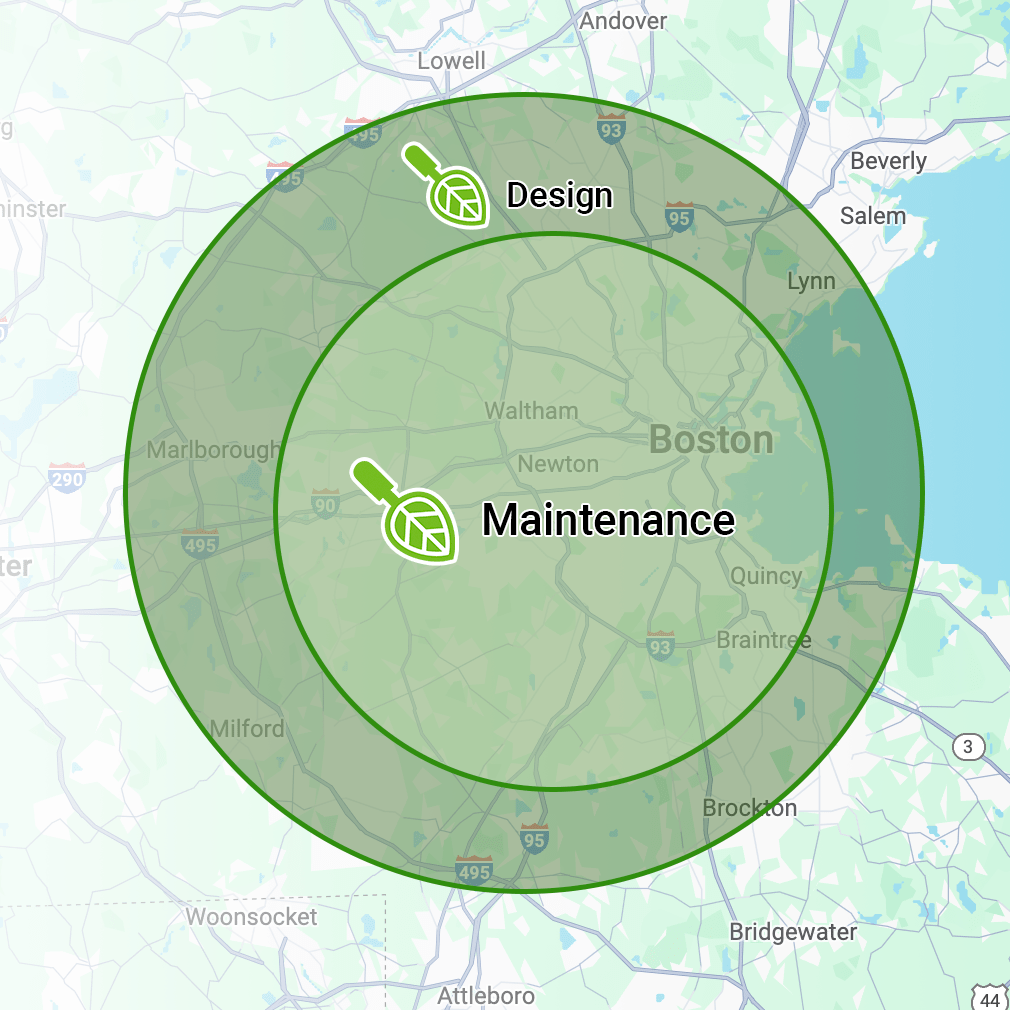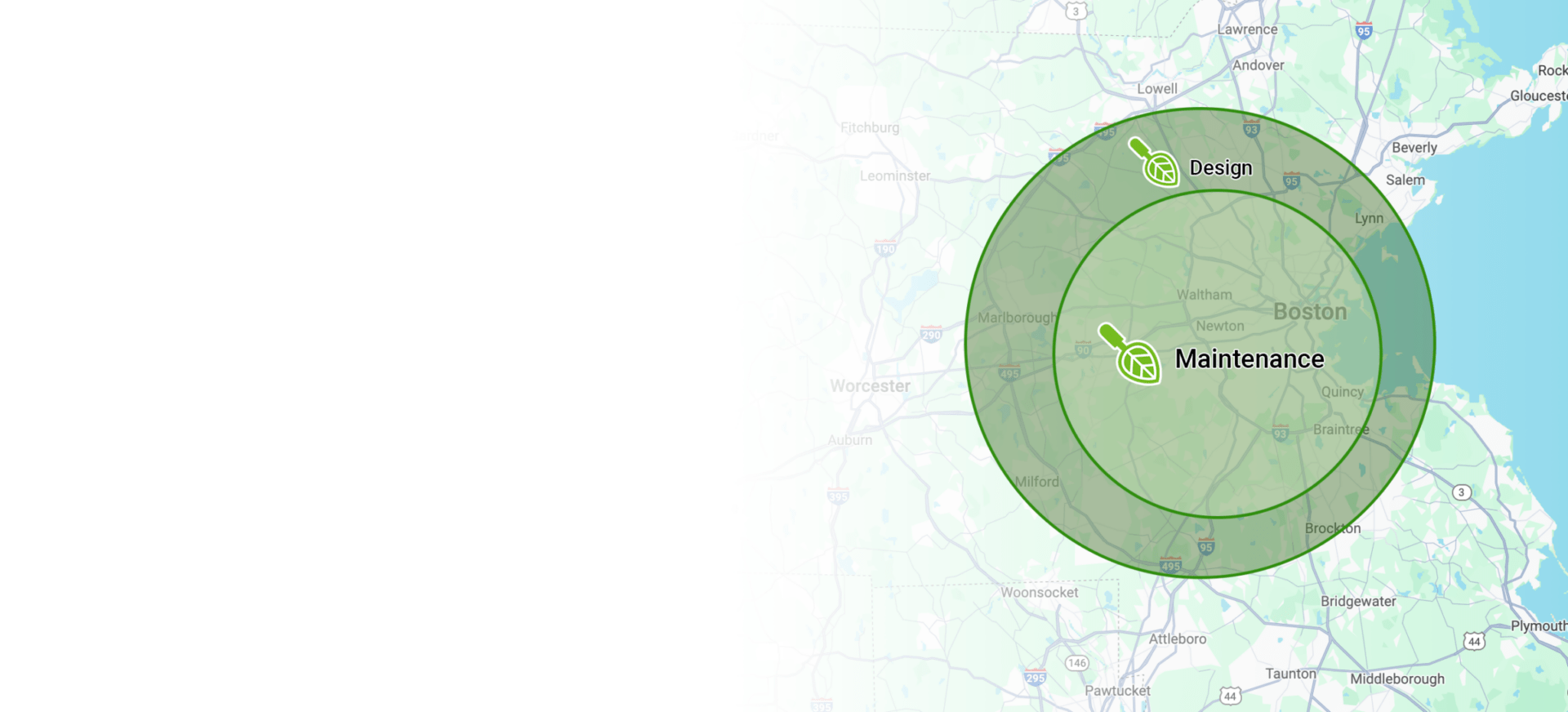Residential Landscape Maintenance in Newton, MA
Keep Your Outdoor Space Looking Its Best Year-Round


Hassle-Free Landscape Maintenance for Your Home
Your outdoor space deserves regular care to stay healthy and inviting. An unmaintained landscape can lead to overgrown shrubs, patchy grass, and unwanted weeds, making your home feel less welcoming. If past landscapers have let you down or maintenance has become overwhelming, it’s time for a solution that works.
With GreenOp Landscape’s residential landscape maintenance in Newton, MA, you get expert care that keeps your property looking polished without the hassle. From weekly mowing and precise pruning to seasonal clean-ups, everything is planned and handled for you—so you never have to worry.
Residential Landscape Maintenance Services in Newton, MA
Our residential landscape maintenance services cover everything from routine upkeep to specialized care, ensuring your property stays healthy, vibrant, and beautiful year-round. Need something specific? We offer customized solutions tailored to your landscape’s unique needs. Whether it’s on the list below or something more specialized, if your landscape needs it—we can handle it.
Essential Maintenance Included in All Plans
Seasonal Cleanups
Prepare your property for changing seasons with debris removal and essential care.
Weeding & Mulching
Keep garden beds tidy and nourished with professional weeding and mulch application.
Pruning & Trimming
Maintain the health and appearance of shrubs, hedges, and trees with precise trimming.
Weekly Mowing
A consistent mowing schedule ensures a lush, even, and vibrant lawn all season long.
Property Walkthroughs
Maintain the health and appearance of shrubs, hedges, and trees with precise trimming.
Expert Guidance
Receive professional insights and expert recommendations to keep your yard thriving.
Optional Additions for Residential Maintenance Plans
Fertilization & Soil Health
Nutrient-rich soil and expert fertilization keep your landscape lush, healthy, and thriving.
Irrigation System Management
Keep your lawn and plants thriving with precise, custom watering schedules.
Plant Health Monitoring
Regular check-ups ensure your trees, shrubs, and flowers stay healthy, and pest-free.
Specialty Pruning
Expert care for ornamental trees and shrubs to enhance beauty, shape, and long-term growth.
Annuals Planting
Add vibrant, seasonal color to your landscape with fresh, expertly chosen and carefully planted annuals.
Bulb Planting
Plant today, bloom tomorrow—enjoy stunning seasonal flowers with perfectly timed bulb planting.
Lawn Aeration & Overseeding
Thicker, healthier grass starts here. Reduce compaction and improve soil & growth.
Organic Lawn Care
A greener, chemical-free approach to lush, resilient turf that’s safe for people and pets.

“Our condo association has been thrilled with their work”
“GreenOp has done a terrific job from the very beginning. Josh was very patient and responsive to our questions while we were deciding to hire them for landscape maintenance of our Condo Association property. Everyone in our 8-unit townhouse condo association has been thrilled with their work. They also alert you the day before they visit in case cars may need to be moved. Overall, we have been very happy as they have a very reasonable price and exceptional service.”
“They genuinely care about their employees and their customers”
“I’ve worked with Josh at Green Ops for the last few years. They treat their employees well and genuinely care about their employees and their customers. If you’re looking for an awesome landscaping service in the greater Boston area, start with these guys.”
“I was truly amazed”
“GreenOp came in and rectified my little jungle I had surrounding my home. I worked a lot, and it became increasingly difficult for me to control. I called for a quote and met with Chris, and the rest was history. GreenOp came in, and puff, did their magic, & maintained the landscaping post. I was truly amazed. I will definitely recommend and maintain a working relationship onwards.”
“A breath of fresh air for first-time homeowners”
“As a first-time homeowner, vetting and hiring contractors is definitely the most stressful part of the process! GreenOp is a breath of fresh air. I’ve used Josh and his crew at GreenOp for a few different projects and just hired them again to finish the design and landscaping of our backyard. Josh is responsive to questions and respectful of budgets, and his crew is professional, quick, and tidy. We’ve been really happy with the quality of work – after our first project with GreenOp, multiple neighbors came over to compliment us!”
“They consistently exceed expectations”
“I’ve had the pleasure of working with GreenOp on multiple occasions, and they consistently exceed expectations. Their attention to detail is unmatched, ensuring that every project is executed with precision and care. Communication is always clear and timely, making collaboration smooth and efficient. The project management team at GreenOp stands out for their exceptional organizational skills and commitment to excellence. Their dedication to delivering top-notch results makes them a standout choice in the industry. I highly recommend GreenOp with a 5/5 rating!”

Why Choose GreenOp Landscape?
A well-maintained landscape should be effortless. Here’s how GreenOp Landscape makes it happen:
- Reliable & Professional – A trusted team that shows up and delivers expert care.
- Clear Communication – All details are managed in one system for easy updates.
- Hands-Off Maintenance – Every service is planned so you don’t have to think about it.
- Streamlined Invoicing – Simple and professional billing for a stress-free experience.

Serving Milton, MA & Surrounding Areas
- Auburndale
- Bedford
- Belmont
- Boston
- Brookline
- Duxbury
- Lexington
- Lincoln
- Medfield
- Natick
- Needham
- Newton
- Sherborn
- Southborough
- Sudbury
- Waban
- Wayland
- Wellesley
- Weston

Erosion Control Solutions with Landscape Maintenance in Newton, MA
Effective erosion control is a critical component of landscape maintenance, preserving soil health and preventing costly damage to both natural and man-made features. By implementing strategic solutions, property owners can protect their landscapes from water runoff, wind erosion, and other environmental factors.
Why Erosion Control Is Important for Landscaping Services in Newton, MA
Erosion can lead to:
– Loss of fertile topsoil.
– Damage to plants and vegetation.
– Contamination of nearby water bodies due to sediment runoff.
– Undermining of structures such as patios, walkways, and foundations.
Addressing erosion proactively ensures the longevity and sustainability of the landscape while reducing maintenance costs over time.
Common Erosion Control Solutions for Landscape in Newton, MA
- Grass, shrubs, or trees serve as natural barriers against erosion by anchoring soil with their root systems.
- Native plants are particularly effective due to their adaptability to local climates and soil conditions.
- These materials help deflect rainfall impact and reduce surface water flow rates.
- Organic mulches also improve soil structure over time by adding nutrients as they decompose.
- Retaining walls help stabilize slopes and prevent soil movement on steep terrains.
- They also enhance the aesthetic appeal of outdoor spaces when designed with complementary materials.
- Dividing slopes into flat sections slows down water runoff while creating usable planting areas.
- This is particularly useful in regions prone to heavy rains or where space optimization is required.
- French drains redirect excess groundwater away from vulnerable areas using perforated pipes encased in gravel.
- They are ideal for mitigating waterlogging issues that may exacerbate erosion.
Materials Used in Erosion Control Solutions for Landscape Design in Newton, MA
| Solution | Recommended Materials | Benefits |
| Vegetative Cover | Native plant species | Low cost; environmentally friendly |
| Mulch & Gravel | Bark mulch, crushed stone | Reduces surface impact; durable |
| Retaining Walls | Concrete blocks, natural stone | Long-lasting; structural support |
| French Drains | Perforated PVC pipes, gravel | Prevents pooling; efficient drainage |
Tips for Effective Erosion Management with Landscaping Companies Near Me
- Assess the Landscape Regularly: Conduct periodic inspections during rainy seasons or after severe weather events to identify new problem areas early.
- Combine Methods Where Necessary: For maximum protection, integrate multiple strategies (e.g., pairing vegetation with retaining walls).
- Work With Professionals: For large-scale projects like retaining walls or complex grading operations, consulting experienced contractors ensures proper design and execution.
By adopting these solutions and following best practices in erosion control management, landscapes can remain healthy while minimizing environmental degradation caused by uncontrolled soil movement or water runoff.
Terracing & Grading
Terracing and grading are integral components of effective landscape maintenance, particularly for properties with uneven or sloped terrain. These techniques not only enhance the aesthetic appeal of a landscape but also address functional issues such as soil erosion, water drainage, and land usability. By carefully designing and executing terracing and grading strategies, property owners can transform challenging landscapes into sustainable and visually appealing spaces.
Benefits of Terracing & Grading
- Terraces act as barriers that slow down water runoff, reducing soil erosion on slopes.
- Grading directs water flow to prevent pooling or excessive runoff.
- Sloped land can be leveled into flat terraces, making it usable for gardening or recreation.
- Helps maximize available space in residential or commercial properties.
- Proper grading prevents water from collecting near building foundations.
- Reduces the risk of flooding by channeling excess water into designated drainage systems.
- Adds structure to hilly landscapes by creating distinct levels.
- Can be complemented with retaining walls, steps, or decorative plants for an enhanced look.
Key Steps in Terracing & Grading
- Analyze the slope, soil type, and overall layout.
- Identify drainage patterns and existing problem areas like erosion-prone spots.
- Determine the number of terraces required based on slope steepness.
- Decide on materials such as stone, wood, or concrete for terrace edges.
- Shape the land so that each terrace is level while ensuring proper water flow between them.
- Use earth-moving equipment to adjust soil elevation as needed.
- Incorporate French drains or swales between terraces for efficient water management.
- Ensure that graded surfaces slope away from buildings to avoid foundation issues.
- Apply erosion-control measures such as planting ground cover vegetation on slopes between terraces.
- Use geotextile mats or mulch if necessary to stabilize loose soil during construction.
Considerations for Successful Implementation
| Factor | Importance | Example Solutions |
| Soil Composition | Impacts how well terraced areas hold their structure | Add organic matter or use compacted fill |
| Slope Steepness | Determines the number and height of terraces required | Reduce terrace height on steeper slopes |
| Water Flow Patterns | Plays a key role in preventing stagnant water or excessive runoff | Install drainage systems such as French drains |
| Climate Conditions | Influences vegetation choice for stabilizing soil | Opt for drought-resistant grasses |
Maintenance Tips
- Inspect terraces periodically to ensure structural integrity (e.g., check retaining walls for cracks).
- Remove debris from drainage channels to maintain proper flow.
- Replant vegetation if bare patches appear between terraces due to wear or erosion.
- Regularly check graded areas near foundations after heavy rain to ensure no pooling occurs.
By implementing thoughtful terracing and grading practices tailored to your property’s unique needs, you can achieve a balanced combination of functionality and visual appeal while also mitigating potential environmental challenges like erosion and poor drainage.
Terracing & Grading
Terracing and grading are essential techniques in managing landscapes, especially on sloped or uneven terrain. These methods not only improve the aesthetics of an area but also help prevent erosion, manage water flow, and maximize usable space.
Benefits of Terracing
- Erosion Control: By breaking the slope into smaller, flat sections, terracing reduces the speed at which water runs off. This minimizes soil erosion.
- Water Retention: Flat terraces allow water to soak into the soil rather than running off, promoting healthier plant growth.
- Improved Usability: Sloped areas can be difficult to utilize effectively. Terraces create flat spaces for gardens, pathways, or outdoor living areas.
- Aesthetic Appeal: Layered terraces can add depth and structure to a landscape design.
Key Steps in Grading
Grading is the process of leveling or reshaping the ground surface. Proper grading ensures that your outdoor space is functional and resistant to issues like flooding or poor drainage.
- Evaluate the natural slope of the area.
- Identify problem spots where water pools or erosion occurs.
- Design paths for proper drainage by directing surface water away from buildings and structures.
- Ensure compliance with any local regulations regarding stormwater management.
- Use equipment like excavators or graders to remove excess soil from high points and fill in low areas.
- Compact soil layers to prevent settling over time.
- Test soil quality for compaction levels and nutrient content.
- Add organic matter if necessary to improve soil health before planting.
Combining Terracing with Grading
| Issue | Solution | Benefit |
| Steep slopes prone to runoff | Build terraces | Reduces erosion; increases usability |
| Poor drainage | Grade land for proper water flow | Prevents flooding; protects structures |
| Uneven terrain | Combine terracing with mild grading | Creates functional outdoor spaces |
Tips for Success
- Use retaining walls where necessary to support terraces and prevent collapse.
- Incorporate vegetation such as ground cover plants along terrace edges for added stability.
- Avoid over-compacting soil during grading as this can lead to poor water infiltration.
By implementing well-planned terracing and grading techniques, you can transform challenging terrains into thriving landscapes that are both practical and visually pleasing while mitigating risks associated with erosion or improper drainage.
Soil Stabilization Techniques with Landscapers in Newton, MA for Landscaping in Newton, MA
Soil stabilization is a critical aspect of landscape maintenance, ensuring that soil retains its structure and integrity across a variety of environmental conditions. Proper stabilization techniques not only preserve the usability and aesthetic appeal of land but also prevent erosion and improve the longevity of outdoor spaces. Below is an overview of effective soil stabilization methods to help maintain healthy, durable landscapes.
Mechanisms for Soil Stabilization
- Compaction: Using rollers or compacting equipment to increase soil density for better stability.
- Geotextiles: Installing synthetic fabrics beneath soil layers to reinforce the ground structure.
- Aggregate Addition: Mixing gravel or crushed stone into soil to improve load-bearing capacity.
- Lime: Adding lime helps reduce plasticity and increases strength in clay-heavy soils.
- Cement: Blending cement with soil creates a hardened layer that withstands environmental stressors.
- Polymers: Applying liquid polymers can bond loose particles together for improved stability.
- Mulching: A layer of organic mulch reduces surface erosion while promoting water retention.
- Planting Vegetation: Root systems from plants like grasses and shrubs bind soil particles, protecting against displacement over time.
Benefits of Soil Stabilization
- Erosion Prevention: Reduced loss of topsoil caused by wind or water runoff.
- Enhanced Drainage: Better water infiltration minimizes surface pooling.
- Increased Load-Bearing Capacity: Essential for areas where driveways, patios, or walkways are installed.
- Improved Aesthetics: Reduces uneven settling in lawns and garden beds.
Comparing Methods for Different Use Cases
| Approach | Best Used For | Limitations |
| Mechanical (e.g., Compaction) | Construction projects or heavy-duty landscapes | May require specialized equipment |
| Chemical (e.g., Lime) | Clay soils prone to shrinkage/swelling | Can alter pH levels; may need professional oversight |
| Organic (e.g., Vegetation) | Residential gardens or slopes needing natural erosion control | Takes time for plants to establish themselves |
Tips for Implementing Soil Stabilization Techniques
- Conduct a thorough assessment of your soil type before choosing a method.
- On slopes, combine vegetation with erosion control mats for added protection.
- Regularly inspect stabilized areas after heavy rain or high winds to ensure effectiveness.
- Seek professional assistance when dealing with large-scale projects or chemical applications.
By carefully selecting appropriate techniques based on your landscape’s needs, you can maintain stable soil that supports both functionality and beauty over time.
Soil Stabilization Techniques
Soil stabilization is a critical aspect of landscape maintenance, especially in areas prone to erosion, shifting ground, or poor soil conditions. Proper stabilization not only ensures the longevity of your landscaping efforts but also promotes healthy vegetation growth and minimizes environmental damage. Below are various soil stabilization techniques, their benefits, and applications.
Methods of Soil Stabilization
- Mechanical Stabilization
This involves physically altering the soil structure using heavy machinery or manual tools. Common methods include: - Compaction: Compressing loose soil to improve its density and strength.
- Grading: Leveling or reshaping the land to redirect water flow and prevent erosion.
- Chemical Stabilization
This approach uses chemical additives to enhance soil properties: - Lime Treatment: Ideal for clay soils, lime reduces plasticity and increases strength.
- Cement-Stabilized Soil (CSS): Cement is mixed with the soil to create a solid base for construction or landscaping.
- Polymer-Based Solutions: Non-toxic polymers bind particles together, offering long-term durability.
- Biological Stabilization
Plant-based solutions can be highly effective in stabilizing soil over time: - Use of native grass species with deep root systems to anchor the topsoil layer.
- Planting shrubs or trees along slopes that are vulnerable to erosion.
- Geosynthetics Integration
Geosynthetic materials provide structural support: - Geogrids reinforce soil layers in high-stress areas.
- Geotextiles create separation between different types of soils while maintaining drainage capabilities.
Benefits of Proper Soil Stabilization
| Benefits | Description |
| Reduced Erosion | Minimizes runoff-induced degradation by keeping the topsoil intact |
| Improved Structural Integrity | Creates a stable foundation for retaining walls, walkways, and landscaping |
| Enhanced Vegetation Growth | Promotes healthier plants with access to nutrients in stabilized soils |
| Lower Maintenance Costs | Reduces damage caused by shifting or eroding soils over time |
Applications for Landscaping Projects
- Sloped Gardens: Use terracing combined with biological stabilization methods like deep-rooted plants.
- Pathways & Driveways: Employ mechanical compaction coupled with geosynthetics to handle load-bearing needs.
- Waterfront Properties: Combine chemical treatment with erosion control mats for areas closer to water bodies.
Proper implementation of these techniques requires an understanding of your landscape’s specific needs, including factors like slope gradient, moisture levels, and existing vegetation types. By combining these approaches thoughtfully, you can achieve long-lasting stability while enhancing your property’s aesthetics and functionality.
Erosion Blankets & Mats
Erosion blankets and mats are essential tools in modern landscaping and construction to manage soil erosion effectively. These materials provide a protective layer over vulnerable soil surfaces, reducing the impact of wind, water runoff, and other environmental factors that can cause soil displacement. Below is an in-depth overview of their application, types, and benefits.
What Are Erosion Blankets & Mats?
Erosion blankets and mats are sheets made from natural or synthetic fibers designed to stabilize the soil on slopes, embankments, or disturbed areas. They allow vegetation to establish roots while protecting the ground from erosion during this critical growth period.
Benefits of Using Erosion Blankets & Mats
- Soil Protection: Prevents displacement caused by water flow or wind activity.
- Vegetation Growth Aid: Enhances germination by maintaining moisture levels and protecting seeds from being washed away or blown off.
- Cost-Effective Solution: Reduces long-term maintenance costs by minimizing erosion-related damage.
- Environmentally Friendly Options: Many erosion blankets are biodegradable and integrate naturally into the environment once vegetation establishes itself.
Types of Erosion Blankets & Mats
| Material Type | Description | Best Use Case |
| Natural Fibers | Made from materials like straw, coconut coir, or jute | Ideal for environmentally sensitive projects where biodegradability is key |
| Synthetic Materials | Composed of polypropylene or similar plastics | Suitable for steep slopes requiring long-lasting stabilization |
| Hybrid Blankets | Combines natural and synthetic components | Offers durability with partial biodegradability |
Each type serves distinct purposes depending on project needs such as slope gradient, weather conditions, or vegetation requirements.
Common Applications
- Slope Protection: Stabilizes steep inclines prone to erosion due to rainfall or irrigation.
- Stream Banks: Protects riverbanks while promoting plant growth for added stability.
- Construction Sites: Minimizes soil disruption caused by grading or excavation activities.
- Roadside Embankments: Reduces soil loss along highways while supporting native plants.
Installation Tips for Optimal Results
- Clear debris and level the area before laying down the blanket.
- Ensure soil has been compacted properly to provide a stable base.
- Secure with biodegradable stakes for natural fiber products.
- For synthetic options on steeper slopes, use heavy-duty anchors spaced evenly across the surface.
- Seed bare areas before placing erosion control blankets to encourage vegetation growth beneath them.
- Overlap adjacent blanket edges by 4–6 inches to prevent gaps that could expose underlying soil.
Environmental Impact of Working with a Landscape Contractor in Newton, MA
Erosion control products like coir mats (made from coconut fibers) offer a sustainable alternative that aligns with eco-conscious landscaping goals. Biodegradable materials decompose naturally over time without harming local ecosystems.
By implementing erosion blankets and mats strategically in landscaping projects, professionals can ensure effective long-term results while fostering environmentally responsible practices.
How It Works
Your landscape should reflect your vision without added stress. Our process keeps things simple:
Consultation & Design
Collaborate with our team to craft a plan that aligns with your property’s aesthetic, maintenance preferences, and unique characteristics, ensuring a functional and beautiful design.
Expert Installation
Our experienced crew works efficiently, keeping disruptions minimal while ensuring quality that enhances your outdoor space with a professional and refined result.
Ongoing Maintenance
We ensure healthy plants, pristine hardscapes, and proactive solutions that keep your property looking its best season after season, all with minimal effort on your part.
Support & Satisfaction
Our team is available for questions or additional services, providing expert support and a commitment to maintaining your property’s beauty long after the initial project is complete.
Areas Served
Ready for a Yard That Always Looks Its Best?
Never worry about landscape maintenance again. Contact GreenOp Landscape today.

